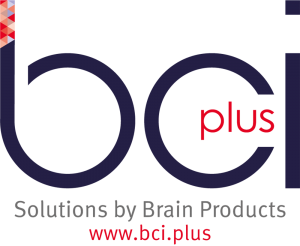Getting started with LSL Markers and Hardware Triggers for Stimulus Presentation
by Dr. Christina Florence Lavallée
Team Leader of Subsidiary Management and Business Development (Brain Products)
 In our most recent BCI+ blog post, we give you a comprehensive introduction to software markers via LSL (LabStreamingLayer) and hardware triggers via the TriggerBox for a variety of stimulus presentation applications and software programs. We have always been active in the LSL community because we want to provide researchers with flexibility and ease in terms of combining data streams from different recording devices or other sources with their Brain Products equipment. Roughly two years ago, we introduced our BrainVision LSL Viewer, which was met with much interest and appreciation by the LSL community. Following this release, we also published a detailed blog post on how to use LSL in general and a newsletter article on what to expect regarding timing of events.
In our most recent BCI+ blog post, we give you a comprehensive introduction to software markers via LSL (LabStreamingLayer) and hardware triggers via the TriggerBox for a variety of stimulus presentation applications and software programs. We have always been active in the LSL community because we want to provide researchers with flexibility and ease in terms of combining data streams from different recording devices or other sources with their Brain Products equipment. Roughly two years ago, we introduced our BrainVision LSL Viewer, which was met with much interest and appreciation by the LSL community. Following this release, we also published a detailed blog post on how to use LSL in general and a newsletter article on what to expect regarding timing of events.
Now let’s dive deep into how to use LSL
In a post on www.bci.plus published in July 2022, we took a deep dive into how to use LSL in combination with Brain Products equipment, including our amplifiers, the TriggerBox and other useful accessories. By using hardware triggers with our TriggerBox, you will always benefit from the most accurate timing because your triggers are directly bound to and recorded alongside the EEG data; however, having an extra piece of equipment may not always be ideal for some experimental setups or application fields (for example, MoBI), but LSL provides a great software solution in these cases. Our Technical Product Manager, Dr. Alex Kreilinger, demonstrates how LSL markers can be used as an alternative to hardware triggers and illustrates, with real examples, how you can add such software markers to your experiment from a variety of stimulus presentation software tools.
Examples are provided for a similar paradigm, guiding you through installation, preparation, activation (and deactivation) of both the LSL markers and hardware triggers for E-Prime®, Presentation®, PsychoPy, and Psychtoolbox. We also provide you with helpful tips and tricks along the way so you will be an expert in both hardware and software triggering, by way of LSL, regardless of which stimulus presentation software you are using for your next experiment.

The TriggerBox Test IO with LSL is also introduced in this blog post. This is required for interfacing the TriggerBox via the serial port and can be useful for several things. Namely, it lets you turn off and on individual bits or cycle through them. This handy tool (now with an optional LSL marker output in version 1.3.0) will assist you in demonstrating simultaneous LSL markers and hardware triggers and in testing if all connections are working as expected.
Not only will you be guided step by step on how to use LabStreamingLayer and hardware triggers in this blog post, but you will also have a means to verify potential problems, such as jitters or latencies, in your set up. We provide you with a collection of ideas, examples, and scripts so that you can execute your experiments smoothly and ensure precise and reliable timing no matter your choice of triggering or stimulus presentation software.
Do you have a cool new application using Brain Products EEG amplifiers and LSL and would like to share it with the community? Write us if you’d like to contribute to a post on the BCI+ blog. Stay in touch and follow the BCI+ twitter for all of the latest news.

